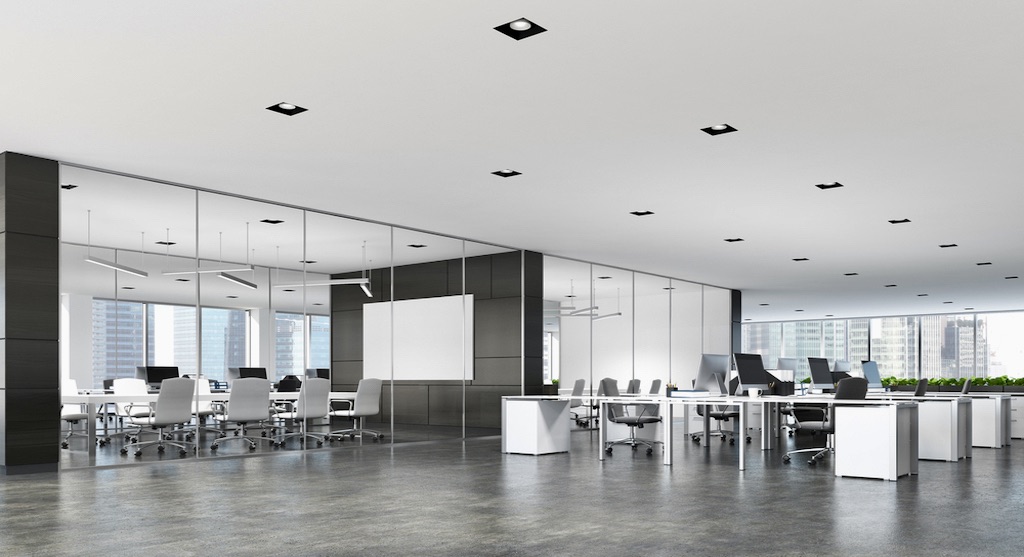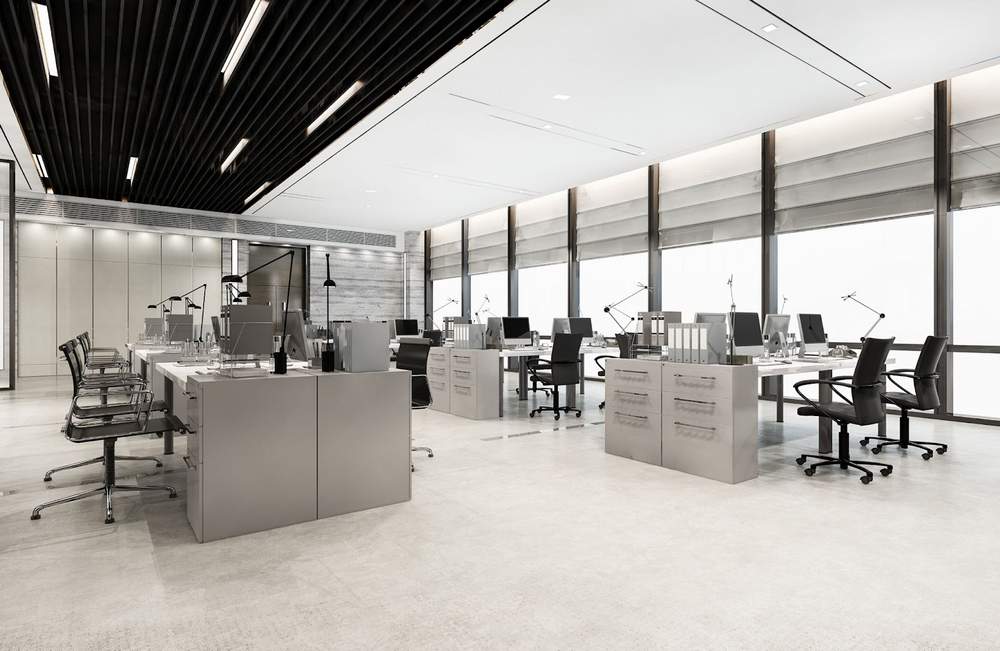In the modern workplace, glass closet doors environments have gained popularity, offering increased natural light and visibility. This design choice, however, also brings certain drawbacks, such as a lack of privacy and potential distractions.
On the positive side, it enhances collaboration and communication among employees. However, limited personalization and lack of personal space can be downsides. Additionally, there is a potential for increased stress and anxiety levels.
This article examines the pros and cons of working in a glass-walled environment, objectively analyzing its impact on employees’ well-being and productivity.
Table of Contents
Pros of Working in a Glass-Walled Environment
Abundance of Natural Light:
One of the standout benefits of working in a glass-walled environment is the abundant influx of natural light. Studies have shown that exposure to natural light has numerous positive effects on employee well-being and productivity.
Natural light is not only easier on the eyes compared to harsh artificial lighting, but it also helps regulate circadian rhythms, leading to better sleep patterns and overall health.
Research conducted by the National Renewable Energy Laboratory (NREL) indicates that employees working in spaces with increased natural light reported higher levels of job satisfaction and overall well-being.
Moreover, a study published in the Journal of Clinical Sleep Medicine found that individuals exposed to more natural light during the day experienced better sleep quality and duration, which could potentially lead to increased alertness and focus at work.
Enhanced Communication and Collaboration:
The design concept of glass office partitions and sliding glass office walls is rooted in the idea of promoting collaboration and communication among employees. Glass-walled environments facilitate visual connectivity, enabling employees to see and interact with their colleagues across the office space.
Research conducted by Haworth, a leading workplace solutions provider, found that transparent glass partitions and open layouts can significantly improve communication and teamwork.
The report suggests that when employees can see each other and share visual cues, it fosters a sense of connection and promotes spontaneous discussions, which can lead to enhanced problem-solving and innovation.
Modern Aesthetics:
The aesthetic appeal of glass office walls and glass partitions for office spaces is undeniable. The use of these sleek design elements creates a sense of modernity and sophistication that can positively impact the company’s image.
A study published in the Journal of Interior Design and Space Planning highlights the importance of aesthetics in the workplace. The study indicates that a well-designed and visually appealing workspace can improve employee pride and satisfaction.
Ultimately affecting their engagement and commitment to the organization. Glass office cubicles and glass conference rooms add an element of professionalism and elegance that can impress clients and potential employees.
Flexibility and Adaptability:
Glass-walled environments often incorporate flexible design elements such as glass office partitions and sliding glass walls. This adaptability allows companies to tailor their workspace to changing needs and organizational dynamics.
The Harvard Business Review emphasizes the importance of flexibility in office design. Glass cubicles and modular workstations can be easily reconfigured to accommodate shifts in team sizes, project requirements, and collaborative needs.
This adaptability not only optimizes space utilization but also promotes a dynamic and agile work environment, enabling companies to respond effectively to evolving business demands.
Cons of Working in a Glass-Walled Environment
Privacy Concerns:
Despite their benefits, the widespread use of glass office partitions, cubicles, and conference rooms introduces significant privacy concerns. While transparency encourages collaboration, it can also inadvertently compromise individual privacy, leading to employee discomfort.
Research published in the Journal of Environmental Psychology indicates that employees in glass-walled environments report lower levels of perceived privacy compared to those in traditional closed offices.
The study suggests that reduced privacy can lead to increased stress levels and decreased job satisfaction. Moreover, the visual exposure of work activities can result in the “fishbowl effect,” where employees feel constantly observed, impacting their sense of autonomy and inhibiting creative thinking.
Distractions and Noise:
The open nature of glass partitions for office spaces and glass office walls can lead to heightened noise levels, creating a challenging environment for focused work. Conversations, phone calls, and other activities can easily reverberate, causing distractions that hinder concentration.
A study published in the Journal of Applied Psychology highlights the negative impact of noise distractions on employee performance. The research found that excessive noise can reduce cognitive performance, increase stress, and decrease job satisfaction.
While glass office cubicles and glass-walled environments can promote collaboration, the lack of acoustical privacy can inadvertently lead to unintended disruptions that impair individual productivity.
Temperature and Glare Control:
The abundant natural light brought about by glass office partitions and glass office walls can also result in temperature imbalances and glare issues. Excessive sunlight can create hotspots and uneven temperature distribution within the workspace, leading to discomfort for employees.
Research conducted by the University of California, Berkeley, highlights the importance of proper shading and climate control in glass-walled environments.
The study suggests that inadequate temperature regulation can negatively impact employee comfort, productivity, and health. Additionally, glare from sunlight can create visual discomfort and hinder the use of screens, potentially impacting tasks that require extensive computer use.
Design Challenges:
While glass office partitions, glass cubicles, and glass conference rooms offer aesthetic benefits, they also pose design challenges that must be carefully addressed. The transparent nature of glass can limit wall space for personalization and visual displays, potentially impacting employee engagement.
A report by the International Facility Management Association (IFMA) acknowledges that designing effective glass-walled environments requires careful consideration of acoustics and visual distractions.
Reflections on glass surfaces can interfere with visual communication, especially on video calls and presentations. Additionally, creating acoustically appropriate spaces within glass environments can be challenging, as sound travels more freely in open layouts.
Do’s and Don’ts in a Glass-Walled Environment
Navigating a glass-walled office environment requires a balance between maintaining a transparent and open atmosphere while respecting privacy and professionalism. Here are some do’s and don’ts to consider:
Do’s:
- Embrace Transparency: Take advantage of the open and transparent nature of the space to encourage communication and collaboration. Use the visibility to your advantage by making yourself accessible to colleagues and showcasing your work.
- Use Visual Cues: Use the glass surfaces to display important information, project updates, or motivational messages. This can enhance the visual appeal of the space while keeping everyone informed.
- Practice Professionalism: Conduct yourself in a professional manner, even though you’re in a transparent environment. Be mindful of your behavior, language, and attire to maintain a sense of professionalism.
- Respect Privacy Zones: Designate specific areas for private discussions or focused work. These areas can be furnished with frosted or tinted glass to provide a balance between transparency and confidentiality.
- Maintain Neatness: With glass surfaces being highly visible, it’s important to keep your workspace organized and clutter-free. This contributes to the overall aesthetics of the environment.
- Use Acoustic Solutions: Implement acoustic solutions to manage noise levels. This could include using sound-absorbing materials, rugs, or even white noise systems to maintain a comfortable acoustic environment.
- Collaborate Mindfully: Engage in collaborative conversations but be aware of your volume. Conversations should be audible only to those involved, respecting the need for focused work by others.
Don’ts:
- Discuss Sensitive Information: Avoid discussing confidential or sensitive matters in areas that lack privacy. Find a designated private space for such discussions to prevent unintentional information leaks.
- Invade Personal Space: Respect the personal space of colleagues by not hovering around their workstations or appearing intrusive. Knock before entering an office or meeting room to give others a chance to respond.
- Disregard Acoustic Concerns: Don’t contribute to noise pollution. Be mindful of the noise you generate, and avoid loud conversations or actions that could disturb your coworkers.
- Neglect Personal Grooming: Since glass offices make everything more visible, be aware of your appearance. Avoid activities that might be distracting to others, like loud chewing, personal phone calls, or excessive grooming.
- Assume Constant Availability: While glass offices encourage accessibility, it’s important to set boundaries. Just because you’re visible doesn’t mean you’re always available. Communicate your availability or use signaling to indicate your focus on tasks.
- Decorate Inappropriately: While personalizing your workspace is encouraged, avoid using decorations or visuals that could be considered offensive, controversial, or distracting to others.
Wrap-Up
The decision to adopt a glass-walled environment for your workplace should be based on a careful consideration of its pros and cons. While these spaces offer abundant natural light, enhanced collaboration, and modern aesthetics, they also come with potential privacy issues, distractions, and design challenges.
The suitability of such an environment depends on the nature of the work, the preferences of employees, and the company’s culture.
Ultimately, the key lies in balancing the benefits of openness and the need for privacy and focus. Careful design, thoughtful layout planning, and the implementation of appropriate acoustic and privacy solutions can help mitigate the drawbacks of glass-walled environments, creating a workspace that optimally supports collaboration and individual productivity.


